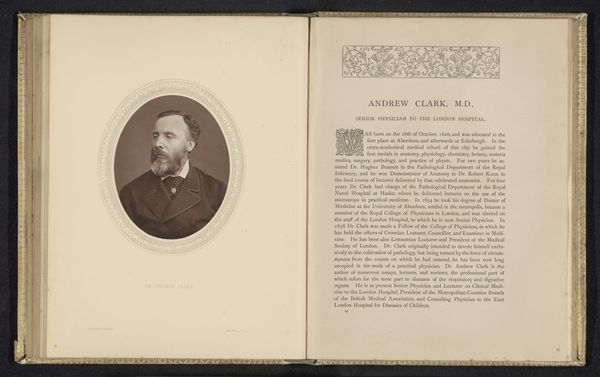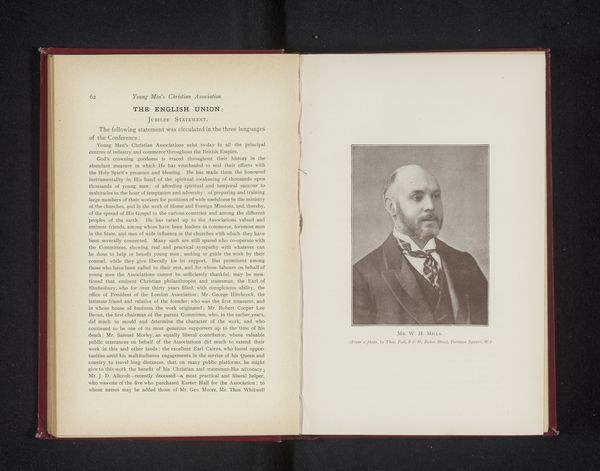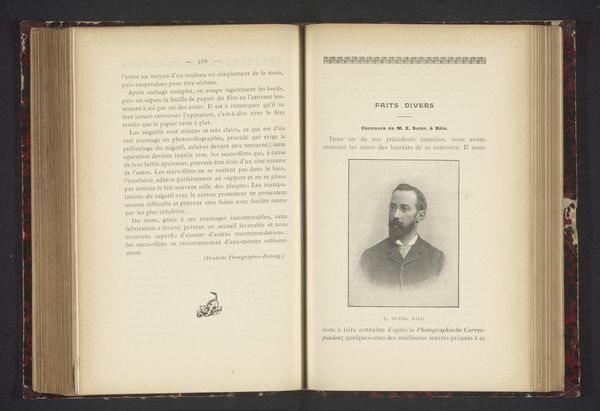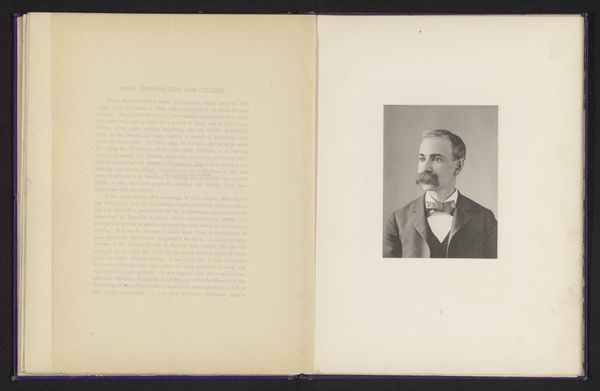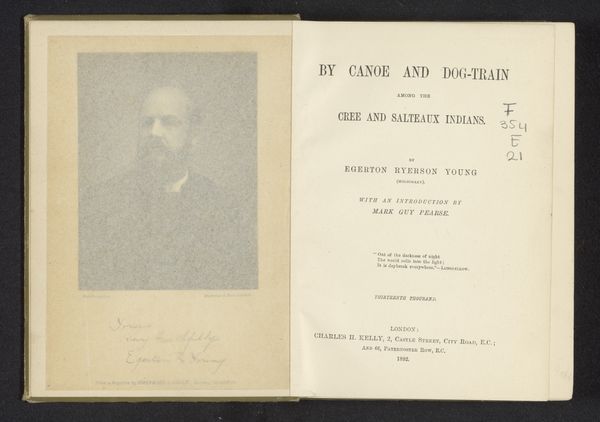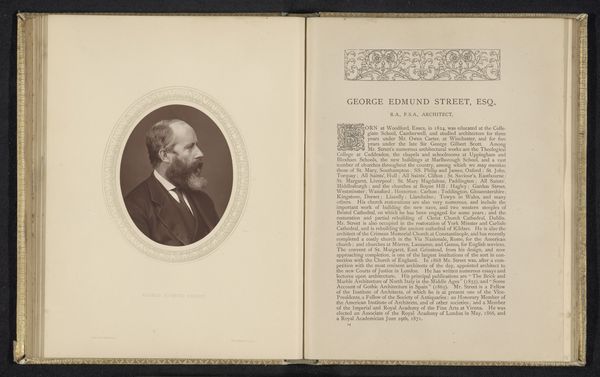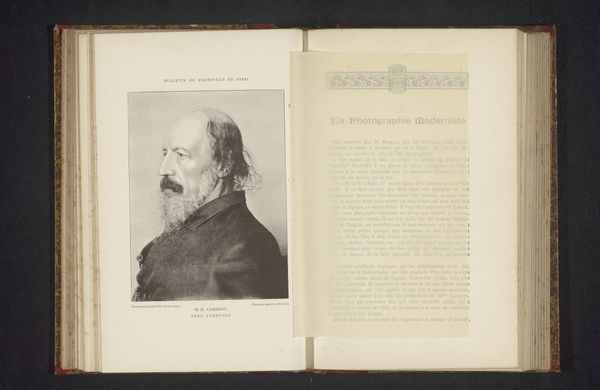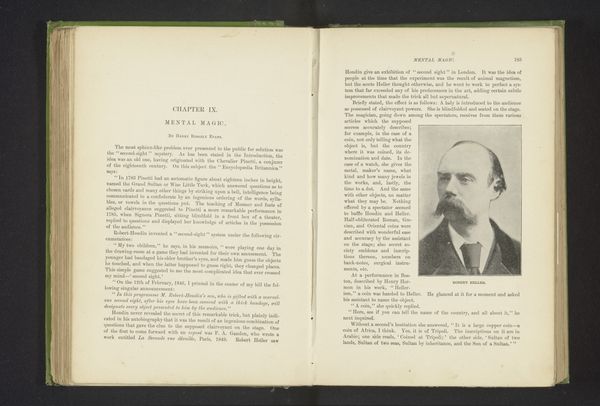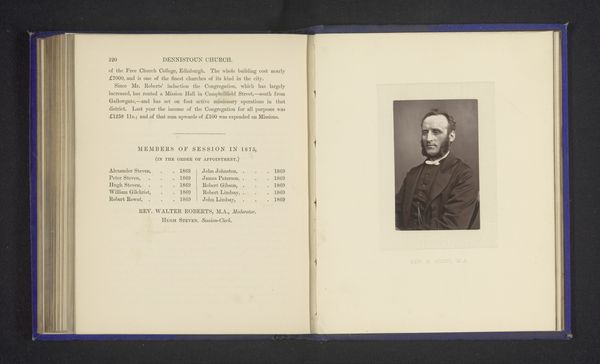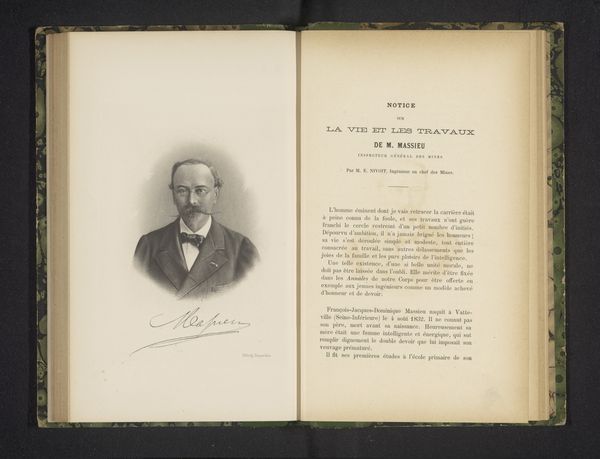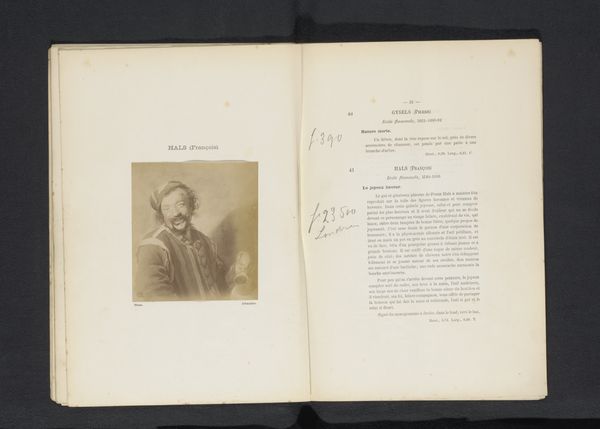
print, photography
#
portrait
#
still-life-photography
# print
#
photography
#
modernism
Dimensions: height 137 mm, width 99 mm
Copyright: Rijks Museum: Open Domain
Editor: Here we have "Portret van Henry Sturmey" by Henry van der Weyde, created before 1891. It’s a photographic print included in a book. The portrait, framed by an oval, feels very traditional, but placing it within a technical manual on photography… it disrupts my expectations. How do you interpret this work? Curator: Indeed, the very framing you noticed speaks volumes. The oval format deliberately harkens back to earlier painted portrait miniatures, placing photography within a lineage of representation. Consider also what Sturmey, identified under the portrait, symbolizes: what type of figure does he represent? Is it technical ingenuity? Artistic endeavor? Victorian manhood? Editor: I hadn't thought of Sturmey as a symbol. The adjacent text discusses "Enlarging, Reducing, and Copying," indicating a focus on technical reproduction... It points to photography's unique capability. Curator: Precisely. So, is this image then, simply a functional illustration? Or could it be a claim about the cultural role of photography at the turn of the century? Look how it emulates the look of a painting; photography sought legitimacy. How does the act of printing and distribution of the portrait contribute to our understanding of photography’s cultural standing? Editor: I guess it reflects both the aspirations of photography as art and its role in mass communication. Seeing the portrait in the context of its photographic instructions reveals its multilayered function. It represents not just Sturmey, but the changing visual landscape of the 19th century. Curator: And even perhaps, photographic portraits’ claims to immortality! It encourages one to think of the book itself as an act of photographic preservation, doesn't it?
Comments
No comments
Be the first to comment and join the conversation on the ultimate creative platform.

